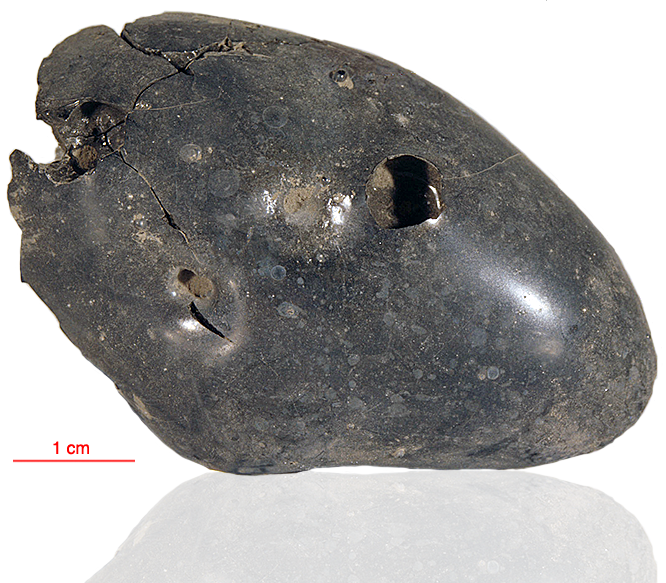
Fact sheet
64455 is an egg-shaped object about 5 cm long and 3 cm across, almost completely covered with thick black glass. The inside “yolk” is a fragment of basaltic melt rock, which is exposed in one quadrant on the top where the glass has broken off. It is a basaltic impact melt with a very thick glass coat. In thin section a swirling glassy pattern can be seen in this coat. Four texture zones are visible in the sample - (a) interior fractured highland basalt, (b) basalt with interstitial partial melt (rotation 2), (c) a thin crust of brown devitrified glass (rotation 1), and (d) an outer coating of fresh glass. Schreibersite and metallic iron are accessory species in the basalt.
The sample weighed 56.7 grams before analysis and has not been dated.
Further details of this and other Apollo samples are here: http://curator.jsc.nasa.gov/lunar/
The Apollo 16 landing site was in the hilly region around Descartes crater in the lunar highlands. The landing spot was chosen to allow the astronauts to gather geologically older lunar material (Descartes Formation and the Cayley Formation) than the samples obtained in the first four landings, which were in or near lunar maria.
The mission lasted 11.1 days, with a stay on the lunar surface of 71 hours. The crew were on the lunar surface for 20.2 hours during which they traversed approximately 27 kilometers and collected approximately 96 kilograms of samples.
Apollo 16 was launched on 16 April 1972.






